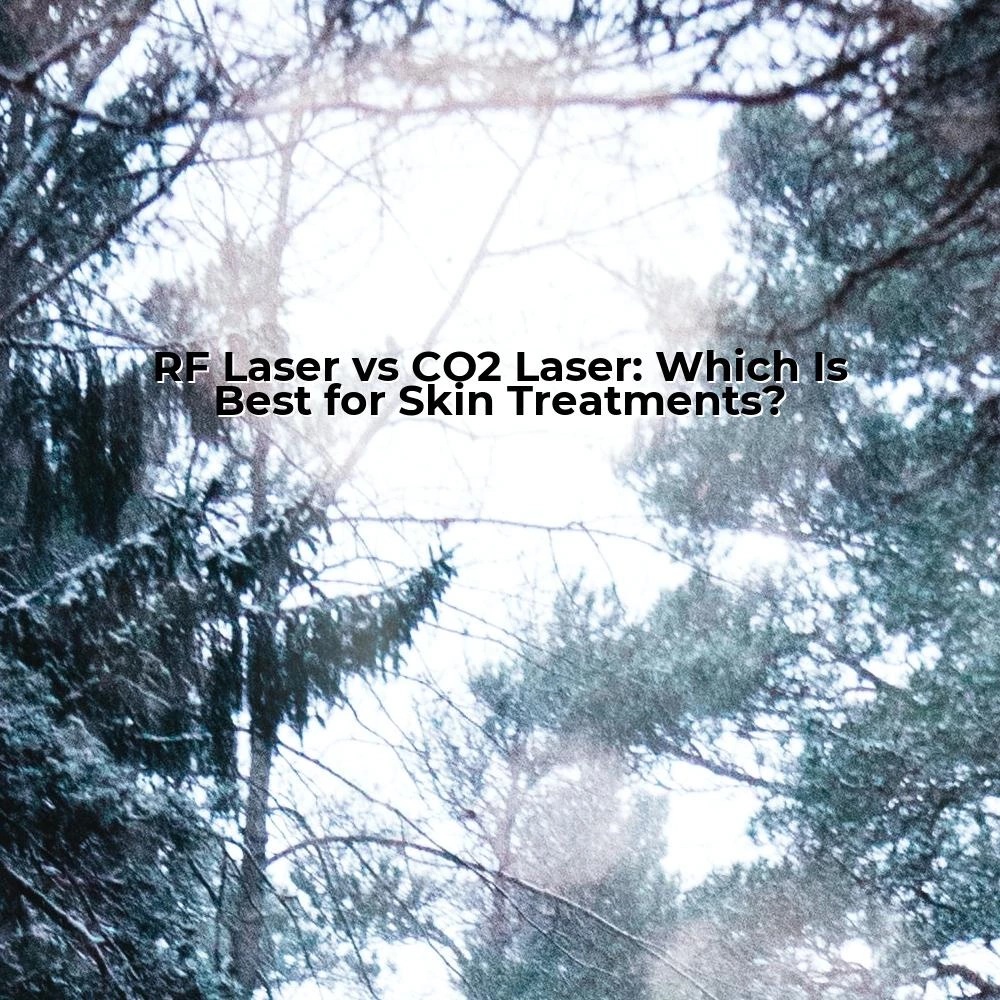RF Laser vs CO2 Laser
| Visit:84

RF Laser vs CO2 Laser
Introduction
As we stride forward in the field of aesthetic medicine, the question of choosing between the RF (Radio Frequency) Laser and the CO2 (Carbon Dioxide) Laser for skin treatments is becoming increasingly crucial. RF and CO2 Lasers have been fundamental tools in dermatology for several decades, each offering unique benefits. However, as a medical professional, you may often find it challenging to decide between the two. This article aims to provide an in-depth analysis of both lasers, their applications, and their effectiveness based on scientific evidence.
Radio Frequency Lasers
Radio Frequency or RF Laser has become a popular choice amongst dermatologists worldwide for its capability to deliver controlled and concentrated energy directly to the deep layers of the skin without causing any harm to the surface layers. RF Lasers are most essentially used for skin tightening and rejuvenation, reducing lines and wrinkles, and treating scars and pigmentation. Another notable aspect is the duration of the results, which tend to last for an extended period. When combined with state-of-the-art technology like 'qswitch', RF lasers can offer unsurpassed color correction in pigmented lesions.
CO2 Lasers
CO2 Lasers, on the other hand, have played a pivotal role in the field of dermatology for a long time and are mainly known for their precision and versatility in skin resurfacing. The key advantage of the CO2 Laser lies in its ability to treat various dermatological conditions in less time with fewer treatment sessions. It is ideal for addressing scars, wrinkles, and sun damage. The outcome of the CO2 Laser treatment is highly predictable and reliable.
Comparative Analysis
Though both the lasers serve under the umbrella of skin treatments, their differences must be evaluated to make an informed choice. The first point to consider is the specificity of the treatment. If the desired outcome centres on the deep layers of the skin and involves tightening and rejuvenation, the RF Laser, especially when aided by the qswitch, would be the superior choice. However, if the objective is to address issues on the surface layers of the skin like scars, wrinkles, or sun damage, the CO2 Laser proves itself as the better selection.
Another crucial aspect to consider is the downtime following treatment. RF Laser, being a non-ablative treatment, usually provides a quicker recovery time compared to the CO2 Laser which is an ablative treatment. The CO2 Laser may also lead to redness and rawness of skin post-treatment, requiring an extended healing period.
Conclusion
In conclusion, the choice between RF Laser and the CO2 Laser essentially boils down to the specific requirements of the skin treatment. While both lasers have distinctive strengths, an understanding of the patient's skin condition, desired outcome, and acceptable downtime is of utmost importance. Furthermore, technological advancements like the qswitch can enhance the capabilities of these lasers, thus improving the overall effectiveness. For more information on the latest laser technologies and skin treatment applications, please visit https://www.ciellulu.net/
The continuous evolution of laser technology will undoubtedly provide better options in the future. For now, both RF Laser and the CO2 Laser continue to play vital roles in the field of aesthetic medicine, offering an array of solutions for diverse skin conditions. In the end, the approach is personalized as every patient's skin and preferences are different.
Source: RF Laser vs CO2 Laser




 Ciellulu Laser - Facial Machine Supplier
Ciellulu Laser - Facial Machine Supplier

